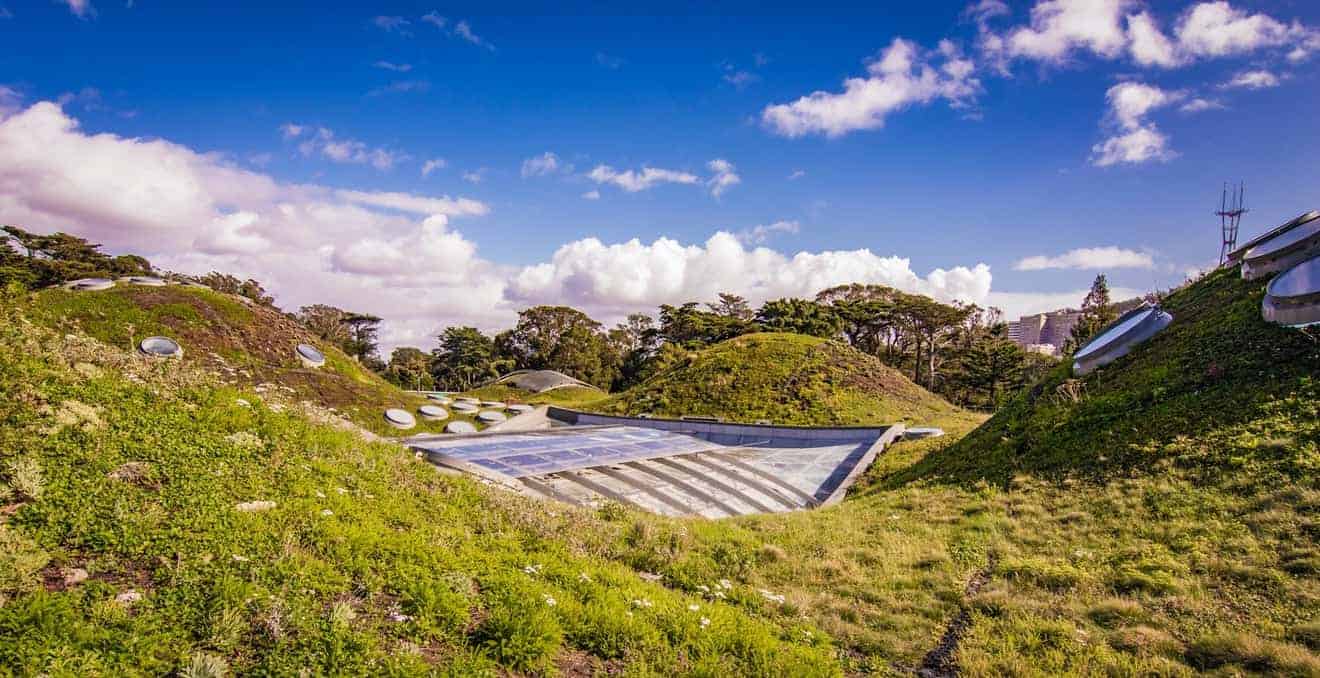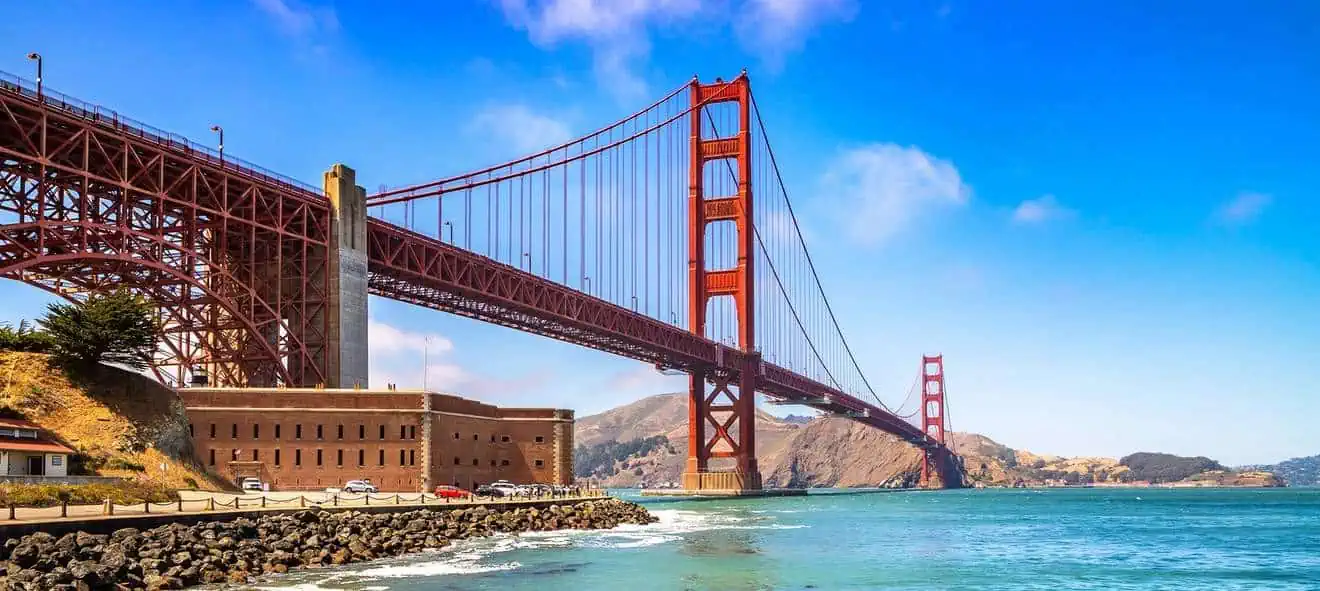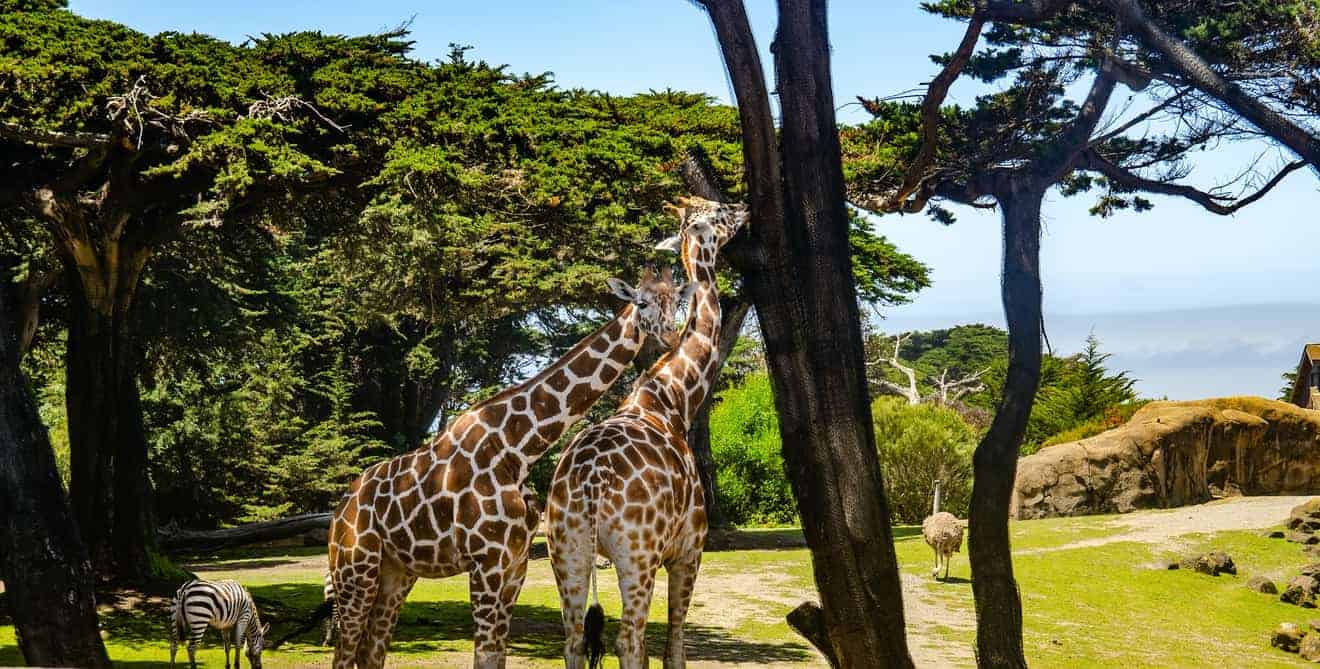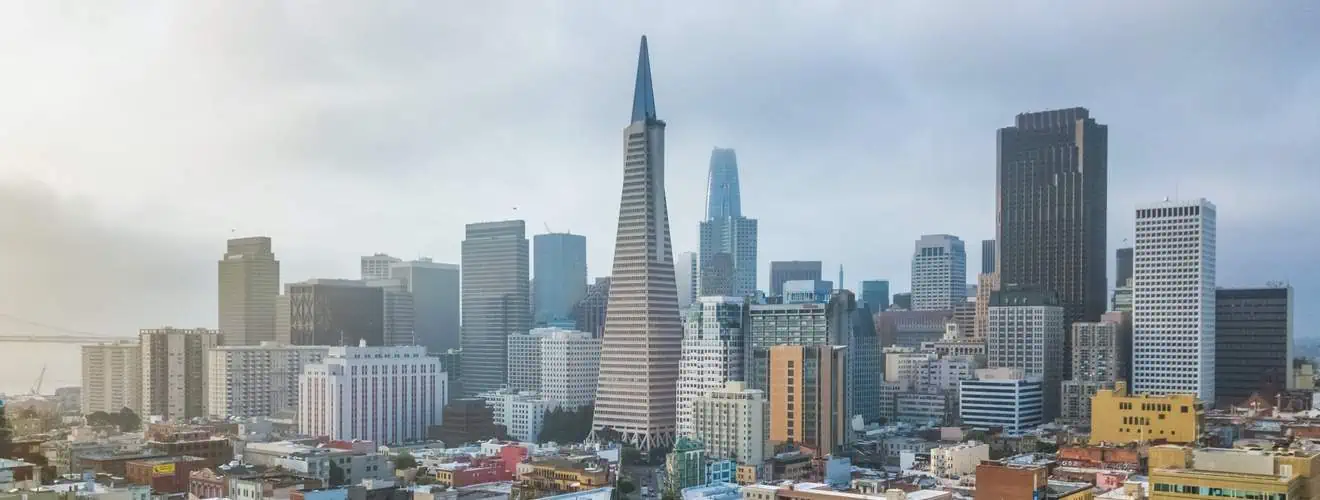An aquarium, a huge rain forest with animals of all kinds, a planetarium, a natural history museum and a research institute all in one place? Yes, it is possible and it is located in San Francisco: it is the California Academy of Sciences, one of the largest and oldest natural history museums in the United States. Doesn’t that sound like enough? Then you should also know that by visiting the museum you will enter one of the most environmentally sustainable buildings in the world, designed by Renzo Piano and opened in 2008.
Contents
California Academy of Sciences Architecture and History
The California Academy of Science was founded in 1853 aboard a sailing ship in the waters off San Francisco. The academy’s motto has always been to regenerate the natural world through science, learning and collaboration.
Over the years, earthquakes that unfortunately frequently hit this area have damaged the museum’s locations. The last one was closed after the 1989 earthquake until 2008 when the museum reopened in its current conformation that you can still admire today. The new venue was designed by internationally renowned architect Renzo Piano, who decided to construct a building that would blend in perfectly with its outdoor environment, Golden Gate Park, and be a leading example of environmentally sustainable architecture.
The materials used are innovative and reduce energy consumption and environmental impact. Some examples of this are the 60,000 photovoltaic cells on the roof, there is an automated ventilation system inside the building that allows the windows to open and close according to the internal temperature and circulate air, there is underfloor heating, and thermal glazing runs from floor to ceiling allowing natural light to illuminate the interior areas.
Perhaps the most striking feature, however, is the museum’s roof garden, evocatively called the ‘Living Roof.’ Rounded in shape to accommodate the planetarium and rainforest, this ‘living roof’ is a blanket of grass and local plants that ensures energy efficiency, as well as housing birds and animals of various kinds and being aesthetically extremely attractive.
Directions: How to Get There
The California Academy of Sciences is located in Golden Gate Park, at 55, Music Concourse Drive. We are in the heart of San Francisco and the museum is easily accessible by public transportation.By bus you can take:
- 44 O’Shaughnessy and get off in front of the Academy (if going north) or on the opposite side in front of the Young Museum if going south;
- 5 Fulton and get off at Fulton Street / 8th Avenue. It takes a 5-minute walk to reach the Academy of Sciences;
- 7 Haight and get off at the Lincoln Way / 9th Avenue stop. You will be at the south entrance of the park and have to walk about 7 minutes to reach the Academy;
By subway you can take the N Judah Metro and get off at the 9th Avenue / Irving Street stop. The museum is about a 10-minute walk from the Metro stop.
If you prefer not to walk too far, remember that inside the park there is a free shuttle, the Golden Gate Park Shuttle, which has a stop right in front of the entrance to the California Academy of Sciences.
Golden Gate Park is also renowned for its bike lanes so one idea might be to rent a bike for a few hours and enjoy the park far from traffic and smog. There are bicycle parking lots on Music Concord Drive and on Nancy Pelosi Drive.
If you are driving, you can park at the Music Concourse Garage which is a short walk from the main museum entrance. Entrances to the parking garage are between Fulton Street and 10th Avenue if you are coming from the north, and between Music Concourse Drive and MLK Drive if you are coming from the south. On weekends it is almost impossible to find a parking space on the street so I suggest you head directly to the Music Concourse Garage. On weekdays you may find vacant spaces along Nancy Pelosi Drive, MLK Drive or Stow Lake Drive, so try your luck. If you have luggage or bags, don’t leave them in the car – the Academy of Science has lockers available at a cost of $8.
Here are some additional tips for getting around town:
California Academy of Sciences Tickets
The California Academy of Science is open every day of the year, including holidays, with the following hours:
- Monday through Saturday from 9:30 a.m. to 5 p.m;
- Sundays from 11:00 a.m. to 5:00 p.m.
Remember that the last admission to the museum is at 4:00 p.m., and to visit the Morrison Planetarium, you must reserve a specific time from the ones scheduled for the shows. Just scan the QR code found in the lobby at the entrance. I recommend that you do this as soon as you arrive so that you have more possibilities of choosing your preferred time.
The museum holds Nightlife Events every Thursday night from 6-10 p.m. for people over 21 years old. Also, if you want, you can purchase Nightlife VIP Experiences: admission on Thursdays at 6:00 p.m. or 6:30 p.m. for people over 21 with 2 free cocktails, relaxation in a reserved rooftop area, a tour to discover the museum’s collections, priority entry to the Rainforest, and various other ‘benefits’.
To respect the resting hours of the inhabitant animals, the Osher Rainforest is open from 10 a.m. to 4:45 p.m. Monday through Saturday and 11 a.m. to 4:45 p.m. on Sundays. During Nightlife Events it remains open between 6:00 p.m. and 7:45 p.m.
The cost of a ticket to visit the California Academy of Science is not exactly cheap, but given the size of the museum, the variety of things to do and see, and the location’s special features, this place is certainly worth a visit.
Tickets for an adult vary depending on time of entry and reservation period, ranging between $30 and $40.
Children under 2 years old do not pay.
Between ages 3 and 17, the cost decreases by about $10 compared to the cost of an adult’s ticket.
Admission to Nightlife Events costs $21.50 per person, while to participate in Nightlife VIP Experiences you will have to pay $75.
Purchase tickets for the museum
California Academy of Sciences Attractions
Besides being aesthetically a stunning building, the interior of the museum is so full of things to see and activities to do that it will be an enjoyable experience for people of all ages. Consider that an in-depth visit could take you as long as 3-4 hours.
The Academy is divided into four macro areas:
- Steinhart Aquarium: a huge aquarium where you can see more than 40,000 living specimens including sharks, turtles, jellyfish and the famous albino crocodile.
- Morrison Planetarium: you will literally be surrounded by the universe and its galaxies inside the hall whose dome-screen is more than 72 feet high.
- Osher Rainforest: four floors of rainforest with more than 1,600 animal and plant species.
- Kimball Natural History Museum: one of the ten largest natural history museums in the U.S. where, among other things, you can see how earthquakes work, view T-Rex and whale skeletons, more than 400 gems and minerals, and the very friendly African penguins.
Where to Stay near the Academy
The California Academy of Sciences is located in Golden Gate Park but, as we have often stated, it is not particularly safe at night (see our article on areas to avoid in San Francisco). So I recommend you read our guide on the best neighborhoods to stay in San Francisco and travel to the park by transportation.







